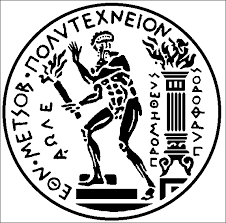Η διδακτορική αυτή διατριβή εμπίπτει γενικότερα στον κλάδο της Θεωρίας \tl{Ramsey} και απαρτίζεται από δύο μέρη. Στο πρώτο μέρος δίνουμε εναλλακτικές αποδείξεις για άπειρες επεκτάσεις του θεωρήματος \tl{Hales--Jewett} (\tl{\textit{Regularity and positional games}, Trans. Amer. Math. Soc. 106 (1963), 222--229} ). Οι επεκτάσεις αυτές, δώθηκαν αρχικά από τους \tl{T. Carlson-- S. Simpson} (\tl{\textit{A dual form of Ramsey's Theorem}, Advances in Math. 53 (1984), pp. 265--290)} και από τους \tl{T. Carlson} (\tl{\textit{Some unifying principles in Ramsey Theory}, Discrete Math., 68 (1988), pp. 117--169} ) και ανεξάρτητα από τους \tl{H. Furstenberg--Y. Katznelson} (\tl{\textit{Idempotents in compact semigroups and Ramsey Theory}, Israel J. Math. 68 (1989), pp. 257--270} ). Η συνήθης προσέγγιση για την απόδειξη αυτών των θεωρημάτων βασίζεται σε τοπολογικές καθώς και αλγεβρικές ιδιότητες της \tl{Stone--{\v C}ech} συμπαγοποίησης των σχετικών δομών. Οι αποδείξεις που παρουσιάζουμε, είναι καθαρά συνδυαστικές και χρησιμοποιούν ως βασική αρχή περιστερώνα, μόνο το θεώρημα \tl{Hales--Jewett}. Στην πραγματικότητα, η αρχική απόδειξη του θεωρήματος \tl{Carlson--Simpson} ήταν επίσης συνδυαστική, αλλά σε διαφορετικό πλαίσιο από τη δική μας και επικεντρωνόταν κυρίως σε πεπερασμένα αλφάβητα. Μερικά αποτελέσματα του μέρους αυτού εμφανίζονται στο άρθρο \tl{\textit{A combinatorial proof of an infinite version of the Hales--Jewett theorem} N. Karagiannis, Journal of Combinatorics, 4 (2),(2013), 273--291 Στο δεύτερο μέρος παρουσιάζουμε μια εκδοχή πυκνότητας (\tl{density version}) του θεωρήματος \tl{Halpern -L\"{a}uchli} (\tl{\textit{A partition theorem}, Trans. Amer. Math. Soc., 124 (1966), 360-367} ). Το θεώρημα αυτό, είναι η βασική αρχή περιστερώνα για πεπερασμένα γινόμενα ομογενών δέντρων δηλαδή δέντρα που ο κάθε κόμβος τους έχει ένα συγκεκριμένο σταθέρο αριθμό αμέσως επόμενων και ανακαλύφθηκε το 1966. Η ((χρωματική)) εκδοχή του παραπάνω θεωρήματος για ομογενή δέντρα, είναι σχεδόν άμεσο πόρισμα του θεωρήματος \tl{Carlson -- Simpson} που μελετάμε στο πρώτο μέρος. Το ερώτημα του αν το παραπάνω θεώρημα δέχεται \tl{density version}, ρωτήθηκε αρχικά από τον \tl{R. Laver} στα τέλη της δεκαετίας του 1960, αλλά δηλώθηκε ρητά από τους \tl{R. Bicker} και \tl{B. Voigt} στο άρθρο \tl{\textit{Density theorems for finitistic trees}, Combinatorica, 3 (1983), 305-313.} Στο άρθρο αυτό, έδειξαν ότι για ένα μόνο ομογενές δέντρο, το θεώρημα \tl{Halpern -L\"{a}uchli} έχει μια εκδοχή πυκνότητας. Επιπλέον, δίνοντας αντιπαραδείγματα, έδειξαν ότι η εκδοχή πυκνότητας ισχύει μόνο για ομογενή δέντρα. Η απόδειξη της ύπαρξης πυκνότητας του παραπάνω θεωρήματος για κάθε πεπερασμένη ακολουθία ομογενών δέντρων, είναι το βασικό θεώρημα του Μέρους 2 και απαντά καταφατικά στην εικασία του \tl{R. Laver}. Τα αποτελέσματα του μέρους αυτού περιέχονται στο άρθρο \tl{\textit{A density version of the Halpern--L\"{a}uchli theorem}, P. Dodos, V. Kanellopoulos and N. Karagiannis, Advances in Mathematics 244 (2013), 955-978
(EL)
This doctoral thesis belongs in the area of Ramsey Theory and is divided in two sections. In the rst one, we provide alternative proofs of in nite extensions of the Hales{ Jewett theorem (Regularity and positional games, Trans. Amer. Math. Soc. 106 (1963), 222{229 ). These extensions are due to T. Carlson{ S. Simpson (A dual form of Ramsey's Theorem, Advances in Math. 53 (1984), pp. 265{290) and due to T. Carlson (Some unifying principles in Ramsey Theory, Discrete Math., 68 (1988), pp. 117{169 ) and independently to H. Furstenberg{Y. Katznelson (Idempotents in compact semigroups and Ramsey Theory, Israel J. Math. 68 (1989), pp. 257{270 ). The usual approach for the proof of the above theorems is based on topological as well as algebraic notions of the Stone{ Cech compacti cation of the related structures. The proofs that we give are purely combinatorial and use as a pigeonhole principle only the Hales{Jewett theorem. To be more speci c, the original proof of the Carlson{ Simpson theorem was also combinatorial but in a di erent frame than ours and it was mainly focused on nite alphabets. Some results of this section can be found in \A combinatorial proof of an in nite version of the Hales{Jewett theorem N. Karagiannis, Journal of Combinatorics, 4 (2),(2013), 273{291". In the second section, we give a density version of the Halpern -L auchli theorem (A partition theorem, Trans. Amer. Math. Soc., 124 (1966), 360-367 ). This theorem is the main pigeonhole principle for nite products of homogeneous trees, i.e. trees in which each node has a xed number of immediate successors and it was discovered in 1966. The coloring version of the above theorem for homogeneous trees is an immediate corollary of the Carlson { Simpson theorem, which we study in the rst part. The question of whether the above theorem has a density version was rst asked by R. Laver in the late 1960s, but it was explicitly stated by R. Bicker and B. Voigt in \Density theorems for nitistic trees, Combinatorica, 3 (1983), 305- 313". In that paper they proved that for one homogeneous tree the Halpern -L auchli theorem has a density version. Moreover, with counterexamples they showed that the density version could hold only for homogeneous trees. The proof of the density version of the above theorem for any nite number of homogeneous trees is the main theorem of Section 2, which answers a rmatively in Laver's conjecture. The results of this section can be found in the paper \A density version of the Halpern{L auchli theorem, P. Dodos, V. Kanellopoulos and N. Karagiannis, Advances in Mathematics 244 (2013), 955-978
(EL)
 National Technical University of Athens
National Technical University of Athens

